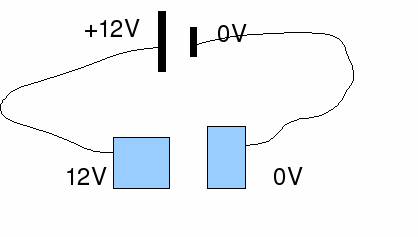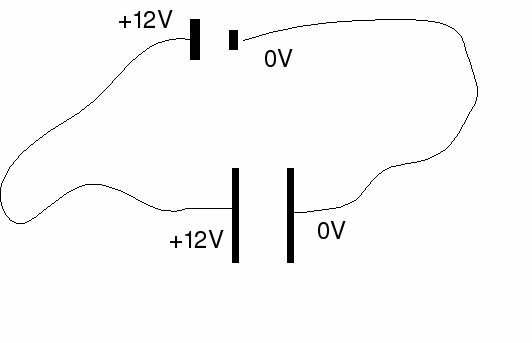Take a battery and connect one terminal to a piece of metal. Electrons will pass between terminal and metal until the metal is charged to the potential of the terminal. If we connect the other terminal to another piece of metal then that terminal will be charged to the potential of the other terminal. No charge can pass from on piece of metal to another if the two pieces are not connected in some way.

Obviously if the voltage of the battery increases the potential difference between the two pieces of metal will also increase. In fact, up to certain limits the charge stored on the pieces of metal is proportional to the voltage across them. The constant of proportionality is called the capacitance, written![]()
Devices which store charge are called 'capacitors'/. The symbol is shown below.

The field between the plate reflects the force on a positive charge - the direction of the electric field is in the directin of the force on a positive charge.

